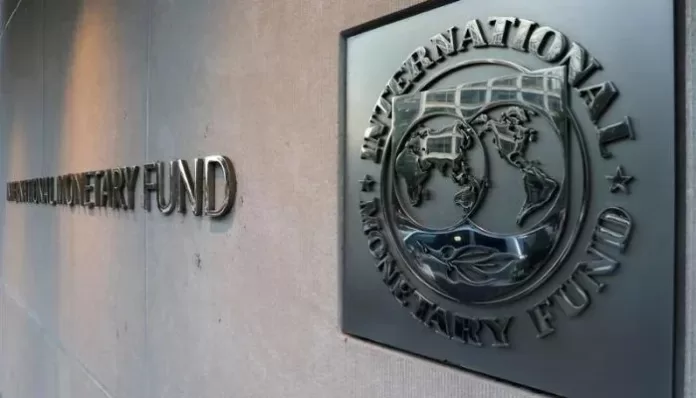ISLAMABAD: As a last-ditch effort to get the IMF program going again, the government has made a plan with four options for reducing circular debt. For example, a new surcharge could raise the maximum price of electricity by Rs 31.6/kWh. The goal of the proposal is to add a surcharge to five categories, including commercial, bulk, industrial, other, and general services, while protecting the domestic and agricultural sectors. Top government sources told The News on Monday that the money-losing power sector was heading toward a level that couldn't be maintained. The power sector's needs could rise to a huge Rs1.73 trillion for the current fiscal year, which is a lot more than the initial budget allocation of Rs0.57 trillion. This is mainly because the initial budget allocation wasn't enough. Under the plan, there are four major proposals. Three of them involve putting a surcharge on all five types of consumers, which would raise the price of electricity by between Rs 2.27 per kWh and Rs 12.59 per kWh, up to Rs 31.6 per kWh. The government will have to change the NEPRA Act 1997 in order to add the fee. Under option one, which would add a surcharge of Rs 31.6 per unit, the rate for commercial consumers could go up to Rs 94 per unit from the current Rs 49 per unit. The rate for bulk consumers could go up to Rs 77.9 per unit from the current Rs 40 per unit; the rate for industrial consumers could go up to Rs 80 per unit from the current Rs 40 per unit; the rate for others could go up to Rs 77 per unit from the current Rs 40 per unit; and the rate for general services could stay the same. could Under option two, the rate will go up by Rs 12.50 per kWh, making it Rs 67 per unit for commercial users, Rs 55 per unit for bulk users, Rs 56 per unit for industrial users, Rs 54 per unit for others, and Rs 54 per unit for general services. With a surcharge of Rs 2.59 per unit, the commercial consumer tariff will rise to Rs 52 per unit, the bulk tariff will rise to Rs 43.37 per unit, the industrial tariff will rise to Rs 43 per unit, the other tariff will rise to Rs 42.4 per unit, and the general services tariff will rise to Rs 42.8 per unit. In the fourth option, if things stay the same and power prices don't go up, the subsidy needed for the current fiscal year is a huge Rs 700 billion. The Kissan package and zero rating for export-oriented industries will add a financial burden of Rs 146 billion, and the IMF is asking for resources to pay for the subsidy or it will add to the monster of circular debt. According to the plan to reduce circular debt, four options are being considered. Option one would raise the price of electricity by Rs 31.6/kwh, option two by Rs 12.59/kwh, option three by Rs 2.27/kwh with a subsidy of Rs 580 billion, and option four would require a subsidy of over Rs 700 billion but not raise the price of electricity. When asked about the possibility of raising the price of electricity, Minister for Finance Ishaq Dar told The News on Monday that there were no plans to do so right now. He promised to talk about it in more detail once the plan for reducing the circular debt was finalized. But official sources said that the power sector was in a very bad place because it wasn't able to do all of the things it had agreed to do with the IMF and the World Bank. For example, the baseline tariff of Rs 7.91 per unit wasn't fully implemented, the fuel price adjustment and quarterly tariff adjustment weren't fully passed on, less than 90 percent of bills were paid when the goal was 93 percent, and transmission and distribution losses were not cut by 17 percent. The fact that the power sector's losses reached over Rs 390 billion in the first quarter of the current fiscal year shows how hard things are right now. This caused the circular debt to grow quickly. The goal was to collect 93 percent of the bills, but only 83 percent were collected in the first quarter. The government paid more than Rs 100 billion for this. The power theft due to Transmission and Distribution (T&D) losses reached 17.4 percent, which was higher than the fixed target of 15.8 percent. This caused increased financial losses of Rs. 13 billion. The tariff rebasing of 7.91 per unit was passed based on a partially quarterly tariff adjustment of over Rs 45 billion recoverable in the third quarter of the current fiscal year and Rs 6 billion recoverable in FCA in November, while Fuel Cost Adjustments of Rs 14 and Rs 13 billion were deferred. The government was supposed to give out subsidies worth Rs 46 billion, but not a single rupee was given out in the first three months of this fiscal year. Markups for Power Holding Company and IPPs went from Rs 39 billion to Rs 40 billion, so this account changed by Rs 1 billion. In the first quarter, demand fell from 45 billion units to 40 billion units, costing Rs 55 billion. In the first quarter of this fiscal year, the GST that FBR did not get back was Rs 31 billion. Because bills were postponed, Rs 34 billion was lost in the first quarter of the current fiscal year. According to the revised Circular Debt Management Plan (CDMP), which was being discussed with the IMF and World Bank, the target of bill recovery was changed from 93.5 percent to 92 percent, which will have a negative effect of Rs 55 billion; losses in T&D will add a burden of Rs 31 billion; not being able to recover generation costs will add losses of Rs 63 billion; and an increase in markup on Power Holding Company and IPPs will add losses of Rs 63 billion. The revised estimates of the CDMP show that the power sector, which was losing money, needed an extra Rs 780 billion, which was more than the initial allocation of about Rs 75 to 80 billion. But official sources said that the real losses could be as high as Rs 800 billion, which means that Rs 700 billion would not be enough to cover them. According to a statement released by the Ministry of Finance on Monday, Senator Mohammad Ishaq Dar, the Federal Minister for Finance and Revenue, led a meeting on Monday to follow up on reforms in the energy sector. Federal Minister for Power Mr. Khurram Dastgir Khan, Minister of State for Finance and Revenue Dr. Ayesha Ghous Pasha, Minister of State for Petroleum Mr. Musadik Masood Malik, SAPM on Finance Mr. Tariq Bajwa, Secretary of Power, and other senior officers were at the meeting. At the meeting, the relevant ministries presented detailed plans for reforming the power and gas sectors, with the goal of making the system more efficient, reducing energy waste, and helping the people. The proposals were mostly about making the energy sector more sustainable so that the country's economy could grow, according to the official statement. (Ends)
Possible power rate hike in Pakistan as part of International Monetary Fund bailout plan
Ishaq Dar, the minister of finance, says there are currently no plans to increase electricity rates.





